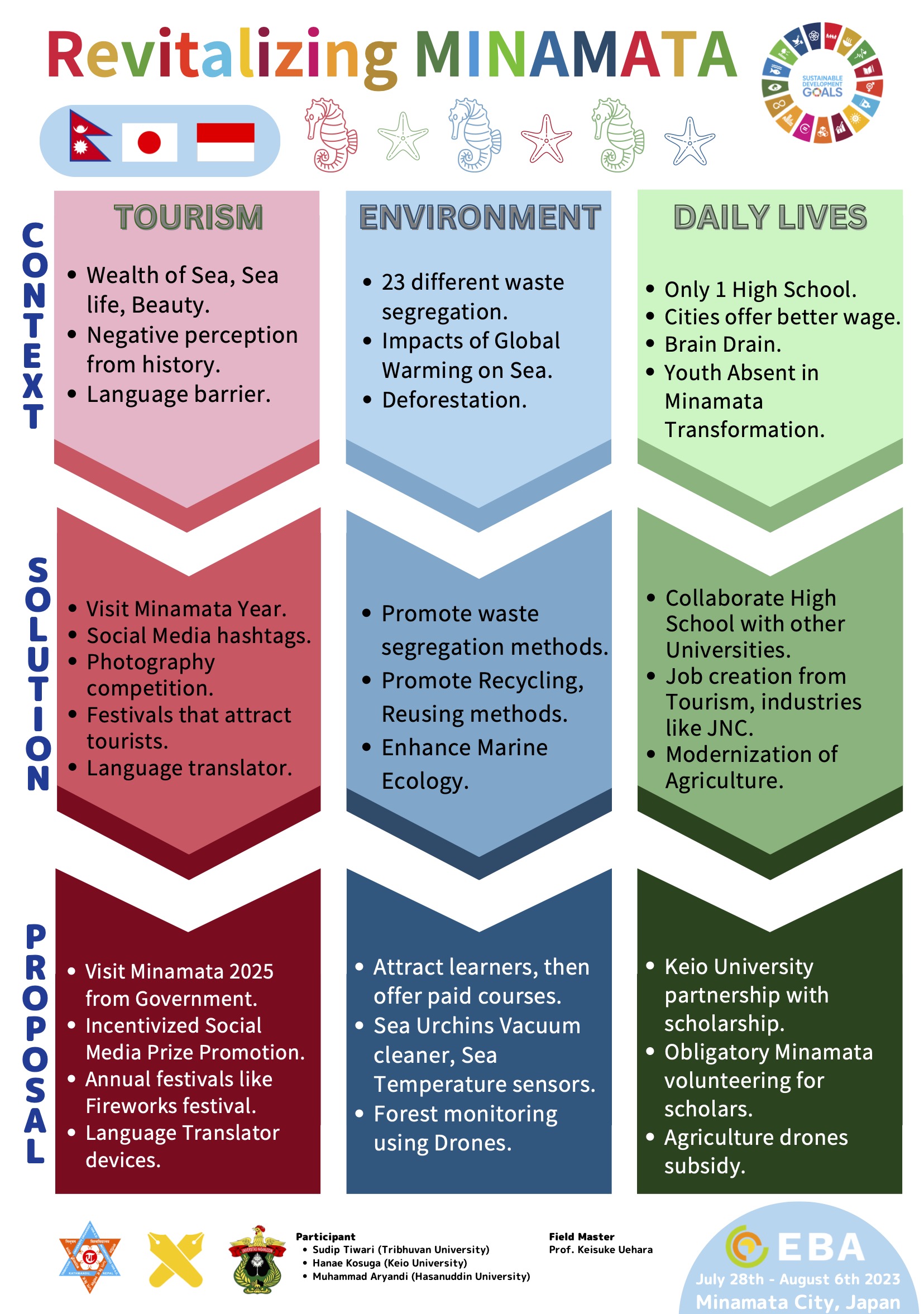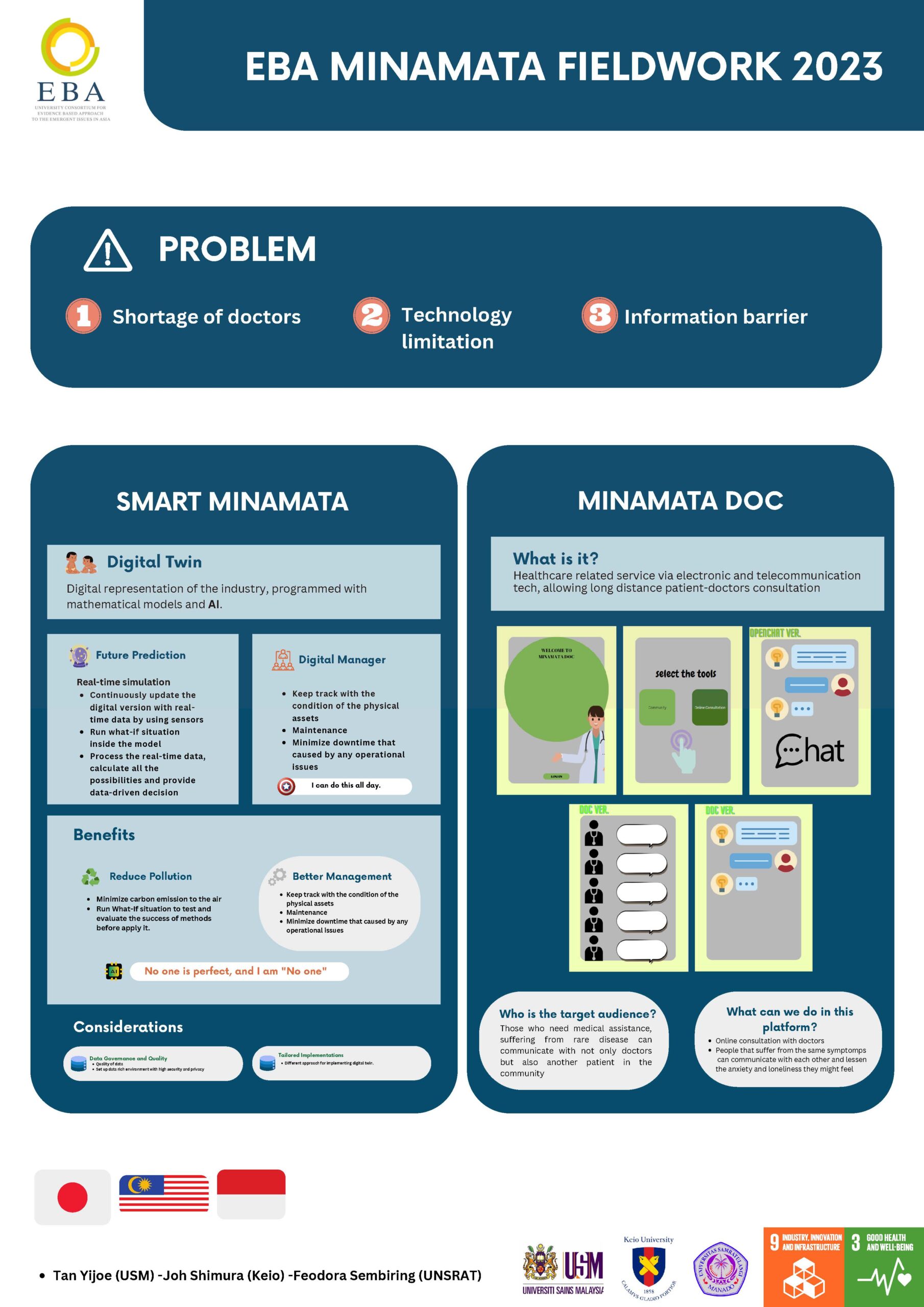EBA Minamata Fieldwork 2023
Period: June ~ August 2023
-
-
Pre-Online session: June ~
-
Fieldtrip: July 28- August 5
-
Final Presentation (with EBA UM 2023 Fieldwork participants) (Online): 18:00 (UTC+9)~, 27 September Please Click HERE to access YouTube
-
Participants: 15 (incl. Faculty)
Indonesia
Brawijaya University (UB)
-
-
Rayhan Egar Sadtya Nugraha (Faculty of Computer Science)
-
Hasanuddin University (UNHAS)
-
-
Muhammad Aryandi (Faculty of Engineering)
-
Institut Teknologi Bandung (ITB)
-
-
Dianing Ratri (Faculty of Art and Design)*
-
Sam Ratulangi University (UNSRAT)
-
-
Feodora Rani Sembiring (Faculty of Medicine)
-
Syiah Kuala University (USK)
-
-
Muhammad Aidil Kamal Adlim (Faculty of Engineering)
-
Japan
Keio University (KEIO)
-
-
Hanae Kosuga (Faculty of Environment and Information Studies)
-
Joh Shimura (Faculty of Environment and Information Studies)
-
Taiga Kabashima (Faculty of Policy Management)
-
Kaoru Otaki (Faculty of Policy Management)
-
Wataru Yamamoto (Faculty of Policy Management)
-
Malaysia
University of Malaya (UM)
-
-
Aeriyn Dwierni Binti Ahmad (Faculty of Engineering)
-
University of Science Malaysia (USM)
-
-
Tan Yijoe (Faculty of Computer Science)
-
Nepal
Tribhuvan University, Institute of Engineering (TU- IOE)
-
-
Sudip Tiwari (Computer Engineering)
-
Sushant Chalise (Center for Information Technology)
-
Philippines
University of the Philippines Diliman (UPD)
-
-
Allaine Ricci Uy Tan (College of Engineering)
-
Fieldwork Host
-
Fieldmaster: Keisuke Uehara (Faculty of Environment and Information Studies)
-
Eliko Akashi (Keio University Global Research Institute)
-
Fathima Assilmia (Keio University Global Research Institute)
-
Kiyoko Itagaki (Keio University Global Research Institute)
Summary:
In this program, participants learned and practiced the EBA method, which consists of Data Collection, Data Analyzation, Data Visualization, and Storytelling, through exploring the question:
-
-
In the digital era, how can we revitalize Minamata City? Provide proposals considering the current situation in Minamata City. or,
-
How could the Minamata disease incident have been avoided if modern technology had been available? What should we do now to apply the lessons learned?
-
This time the field: Minamata city, located in Kyushu island, southern part of Japan. The city is known for Minamata disease, which is caused by mercury pollution from a chemical factory in 1950’s. It is the first disease caused by food chain due to environmental pollution.
Participants learned the overview of the area and, afterward, engaged in discussions with stakeholders for a deeper investigation of the issues faced by the local community. Then, propose possible solutions for sustainable development in Minamata city.

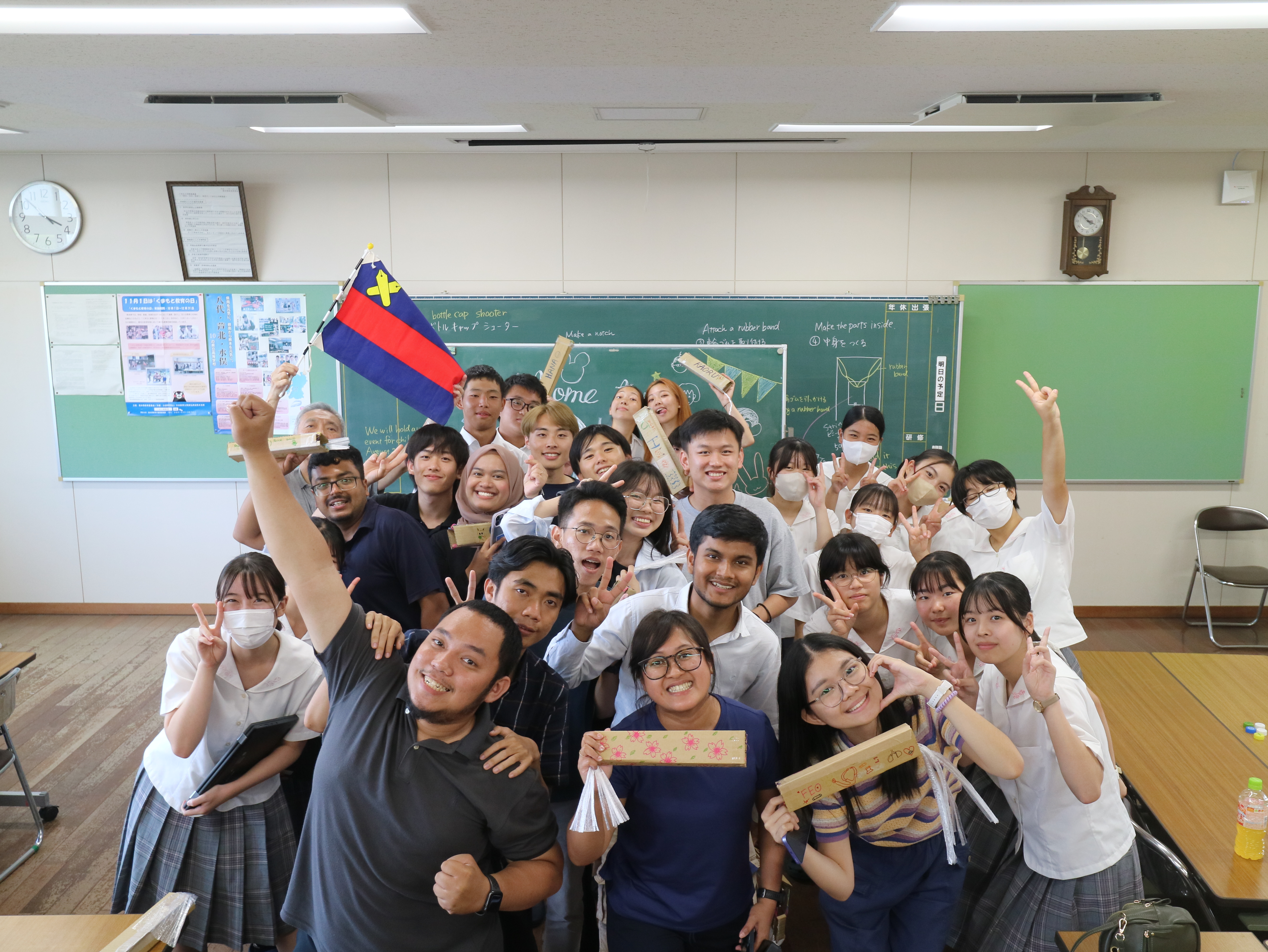
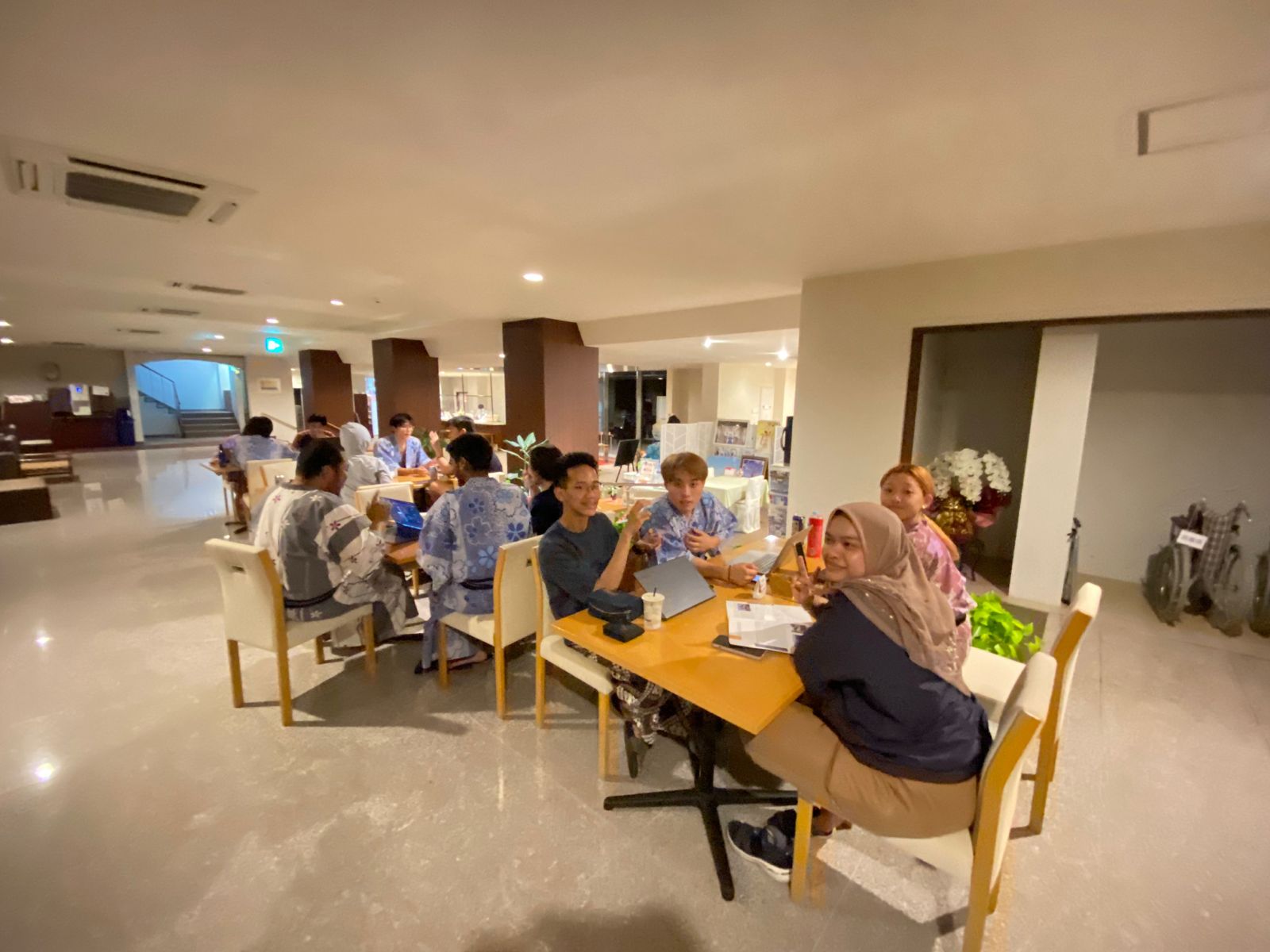
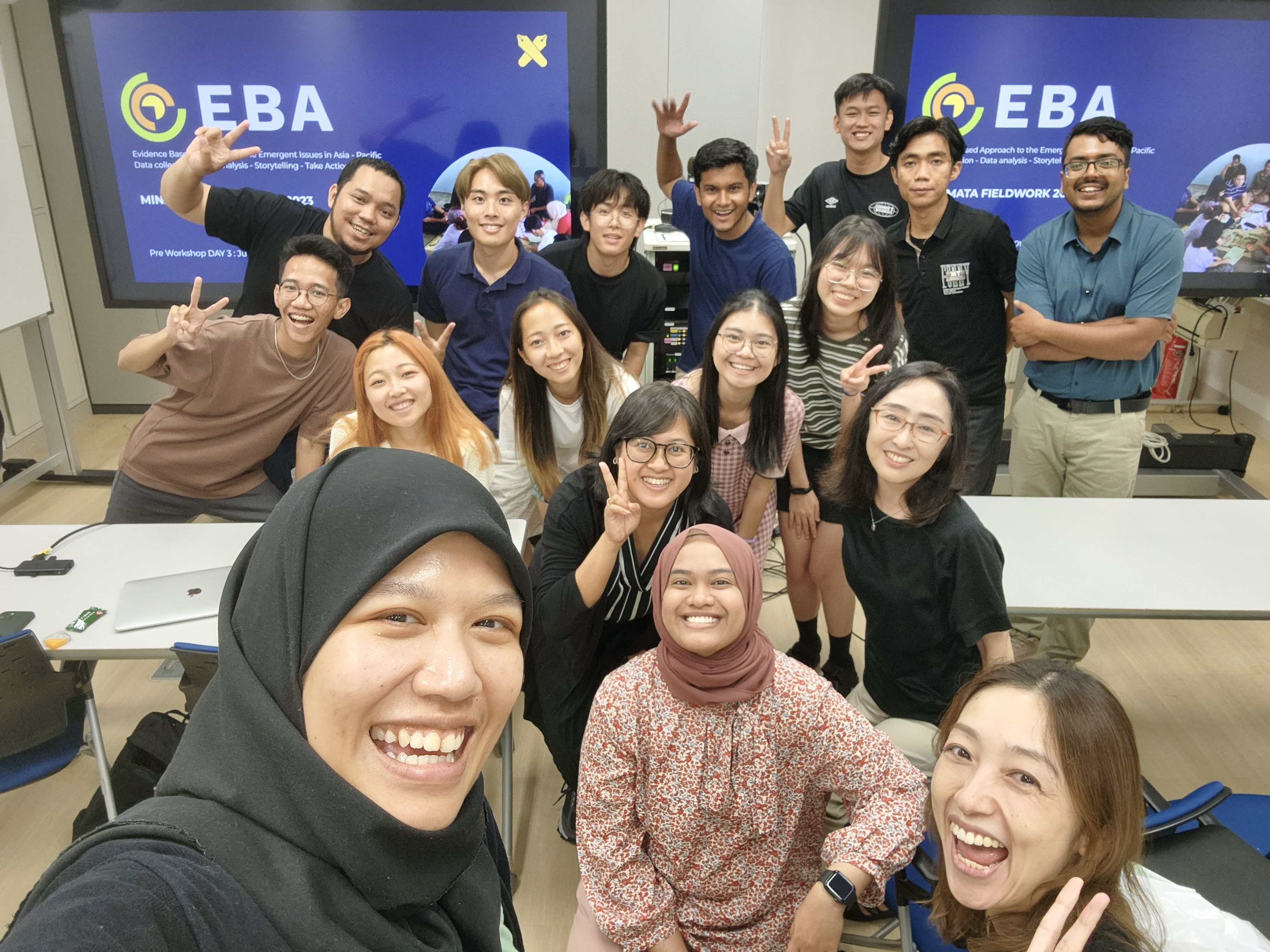

Final Outcomes will be shared at the final presentation (with EBA UM 2023 participants) from 18:00 (UTC+9), 27 September 2023.

Your consent is required to display this content from youtube - Privacy Settings


